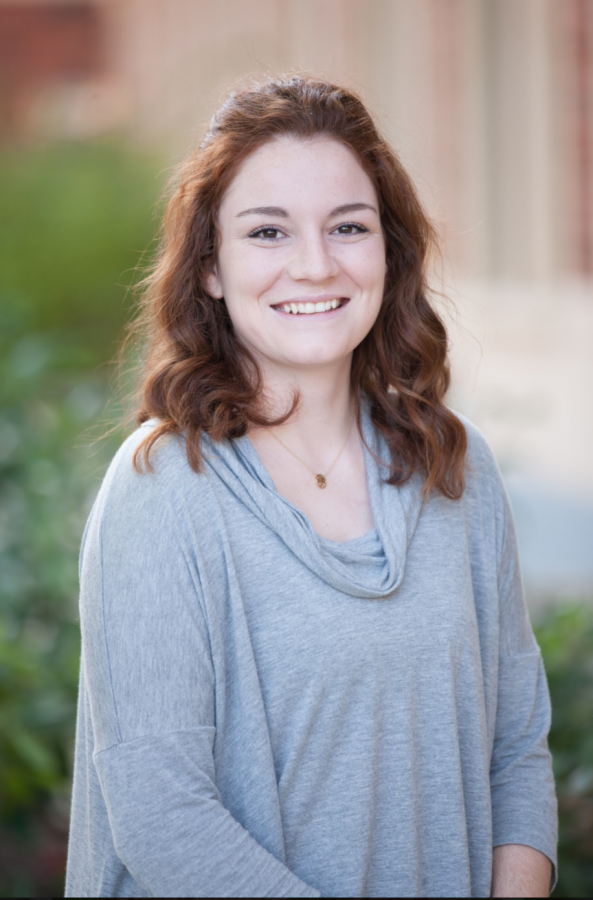Letter from the Editor: It’s not too late to be engaged in the name evaluation process
November 27, 2017
Students have opportunity to engage in OSU community, build legacy
“Out of an ethic of love, we must disrupt!”
I remember this chant echoing through campus in March of 2016 as students and community members marched with signs and bullhorns. This self-named “Solidarity March” was one of the first times I was introduced to the controversy surrounding four names of buildings on the OSU campus: Arnold Dining Center, Avery Lodge, Benton Hall and Annex and Gill Coliseum.
During the march, students and community members took action to raise awareness of issues they found to be prevalent on campus—with a major focus on the names of these four buildings.
This was the first time I had witnessed the feelings of students and community members towards this topic up close. I was amazed by the amount of people who felt so passionately about this topic and wanted their voices to be heard.
Since the march, I have been engaged in becoming educated about the name evaluation process. This first started with the Baro’s coverage of the name evaluation process last year, and led up to conversations I had with Steve Clark, vice president of university relations and marketing, Scott Vignos, director of strategic initiatives and Charlene Alexander, chief diversity officer, in October about the process.
I have been incredibly impressed by the steps taken by the university in order to ensure transparency in this process. I have seen how the members of the Architectural Naming Committee as well as the subcommittee and workgroup are dedicated to providing as much information to the public as possible.
One of the ways in which the members have engaged in this process is through the information on the Building and Place Names website. This website not only contains the reevaluation process, the renaming criteria and the timeline of past events leading up to the process, but also detailed information about each of the namesakes under consideration.
When I first went to interview Clark, Alexander and Vignos about the evaluation process, I initially struggled to write questions to ask them. The majority of my questions had already been answered through the information provided by the Building and Place Names website.
Upon discussing the evaluation process with them, I discovered that these individuals, along with members of the committees, were just as dedicated to the process of transparency as President Ed Ray had stated he was on the website.
One of the ways in which the level of transparency has been fulfilled was through the two community engagement sessions and the four building name evaluation sessions, one for each building under evaluation.
After attending the first community engagement session, I was amazed by not only the information provided by the organizers of event, but also by community’s willingness to participate and be open. The goal of the engagement events was not to convince participants to agree with one side or the other, but rather to become as educated and involved in the process as possible.
I witnessed community members who clearly had opposite opinions towards the evaluation process have civil discussions about the topic. Although they did not come to an agreement, they took away a greater understanding or the other person’s view and more education about the evaluation process as a whole.
One of the main takeaways I have in being engaged in this process is the impact our history has on our daily lives.
“History informs us. It shapes who we are and who we will be, both as people and as a society,” Clark said to me in a previous interview. “We learn from history. We learn what to do and what to not do based on what’s happened in the past. We can decide to be better because of what occurred in the past.”
I would encourage you to become engaged in this process. Although Ray’s final decision is anticipated to occur this week, it isn’t too late to learn more about not only the evaluation process, but also information about the lives of the people these buildings were named after.
You can find extensive information about this process by checking out the Building and Place Names website, as well as previous coverage by the Baro.
As students, our primary goal during our time at OSU is to earn a degree. However, we also have the opportunity to engage in the community around us. Each day that we’re here, we are contributing to OSU’s legacy. Connecting with not only what the university offers us now, but also how the university got here can enrich our experience as Beavers.




















































































![Newspaper clipping from February 25, 1970 in the Daily Barometer showing an article written by Bob Allen, past Barometer Editor. This article was written to spotlight both the student body’s lack of participation with student government at the time in conjunction with their class representatives response. [It’s important to note ASOSU was not structured identically to today’s standards, likely having a president on behalf of each class work together as one entity as opposed to one president representing all classes.]](https://dailybaro.orangemedianetwork.com/wp-content/uploads/2025/03/Screenshot-2025-03-12-1.00.42-PM-e1741811160853.png)























